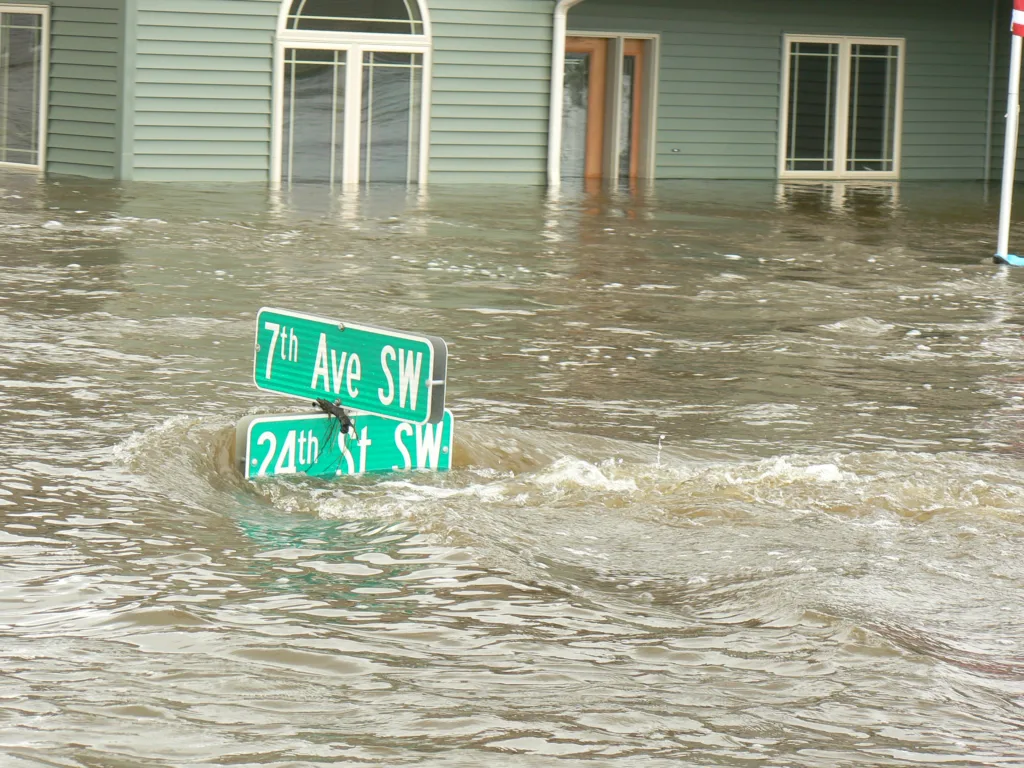

There really doesn’t seem to be very much to Minot’s Souris River, generally meandering silently through the city. Usually those who walk the riverbank, or bicycle near it, must look down to see the water which, quite often, moves very little or not at all.
It’s a ruse, of course. The history of flooding in the city should be proof enough that the aging river is really a sleeping giant. In 1969 the Souris, sometimes referred to as the “Mouse”, became “The Mouse that Roared” as the river spilled out of its banks and inundated much of the city.
In 2011 the Souris would rise again, a lot, so much so it made the historic ‘69 flood look like a puddle. Although the 2011 flood produced the highest water ever recorded in the Souris River basin, causing extensive physical and emotional damage, it was just the last of many memorable Souris River floods that had affected Minot since its early years.
While many Minoters have learned to respect the sleepy Souris, there’s those who have little reason to, save for the stories told by those who experienced its tenacious flooding. After all, the Souris is a mere stream when compared to much larger rivers like North Dakota’s own Missouri and Red Rivers.
But the Souris is different. Its generally casual flow elicits complacency. It's hard to look at the Souris and imagine it to be anything other than compliant. Truth is, it is a very deceptive river. One to keep a watchful eye on.
In 1969 the Souris spilled out of its banks, encouraged somewhat by a high flow in the smaller Des Lacs River that joins the Souris at Burlington, causing lengthy and costly flooding. City officials scrambled to combat the rising water. A massive earthen dike was constructed to keep the city from being cut in two by a flooded river valley. The dike started atop the North Broadway viaduct and ended at the southeast corner of Minot State University.
I was in high school at the time of the 69 flood. School was cancelled due to a combination of a teacher’s strike and problems associated with the flood. Many high school students found themselves helping sandbag and dike their own homes or helping others in need.
Since my folks lived high and dry on south hill, I was available to help elsewhere. I found myself, along with several others, filling sandbags and adding them to the top of a dike behind a residence in Tierecita Vallejo on the city’s west side. We thought we had everything under control, enough so that we entered a walk-in basement with the intent of sitting and resting for a few minutes.
In an instant, and very much to our surprise and a slice of life moment, the basement floor exploded, and water came gushing in. I can still see the carpet being shredded by the broken concrete rising underneath. Fortunately, no one was seriously hurt. We had contained the river but had no idea there was so much pressure building underneath the ground. A few hours later the river topped our sandbags too. Sad stuff.
In the years that followed that brutal 69 flood the city engaged in a river improvement project. Mostly it proved to be construction of a series of coffer dams and the cutting off of a few river loops within the city to allow the slithering river to flow in a more direct route.
Then came the issue of “permanent” flood protection. When it became apparent a proposed Burlington Dam had too much opposition, the Canadians agreed, with U.S. and North Dakota assistance, to build two dams on the Souris River drainage – Rafferty and Alameda, now Grant Devine. Lake Darling Dam was raised too.
A few years later came the punishing flood of 2011. While the reservoir system had worked several times, holding some water here and letting some out there, it became an adversary of sorts in 2011 when the reservoirs filled with snowmelt and rainwater, thereby negating the system of give and take.
I don’t know how many cities have four reservoirs above them. There can’t be many. Four? Yes, four. Boundary Reservoir at Estevan is connected to Rafferty. It’s actually a good system when conditions permit.
However, as Minot and other locations learned in 2011, there’s another side to the system too. And that is why many in the Souris River basin maintain a keen interest in the annual spring melt.